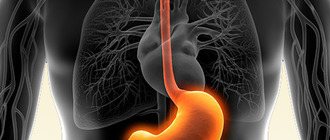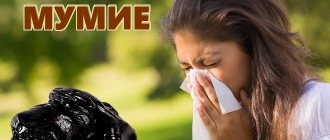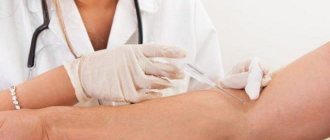7, 10, 14, 20, 21, 30, 35 or 50 pcs.
Film-coated tablets
blue, round, biconvex, slight surface roughness is acceptable; The color of the tablets on the break is white or white with a yellowish tint.
| 1 tab. | |
| desloratadine | 5 mg |
Excipients: calcium hydrogen phosphate dihydrate - 145.4 mg, microcrystalline cellulose - 14.8 mg, hypromellose - 3.7 mg, pregelatinized starch - 5.55 mg, croscarmellose sodium - 1.85 mg, colloidal silicon dioxide (aerosil) - 1.85 mg, magnesium stearate - 1.85 mg.
Film shell composition:
Opadry II blue - 4.967 mg (including lactose monohydrate 36%, hypromellose 28%, titanium dioxide 23%, polyethylene glycol 10%, indigo carmine 2.5%, brilliant blue 0.38%, iron oxide yellow 0.12%), simethicone emulsion - 0.033 mg.
7 pcs. — cellular contour packages (1) — cardboard packs. 7 pcs. — contour cell packaging (2) — cardboard packs. 7 pcs. — cellular contour packages (3) — cardboard packs. 7 pcs. — contour cell packaging (5) — cardboard packs. 10 pieces. — cellular contour packages (1) — cardboard packs.
10 pieces. — contour cell packaging (2) — cardboard packs. 10 pieces. — cellular contour packages (3) — cardboard packs. 10 pieces. — contour cell packaging (5) — cardboard packs.
Histamine H1 receptor blocker (long-acting). It is the primary active metabolite of loratadine. Inhibits the release of histamine and leukotriene C4 from mast cells. Prevents the development and facilitates the course of allergic reactions. It has antiallergic, antipruritic and antiexudative effects. Reduces capillary permeability, prevents the development of tissue edema, relieves spasm of smooth muscles. It has virtually no sedative effect and, when taken at a dose of 7.5 mg, does not affect the speed of psychomotor reactions. In comparative studies of desloratadine and loratadine, no qualitative or quantitative differences in the toxicity of the two drugs at comparable doses (taking into account the concentration of desloratadine) were revealed.
After oral administration, it begins to be detected in plasma within 30 minutes. Food has no effect on distribution. Bioavailability is proportional to the dose, ranging from 5 mg to 20 mg. Plasma protein binding is 83-87%. After a single dose of 5 mg or 7.5 mg C
max is achieved after 2-6 hours (on average after 3 hours). Does not penetrate the BBB. Extensively metabolized in the liver by hydroxylation to form 3-OH-desloratadine combined with a glucuronide, only a small part of the oral dose is excreted by the kidneys (<2%) and feces (<7%). T1/2 – 20-30 hours (on average – 27 hours). When using desloratadine in a dose of 5 mg to 20 mg 1 time / day for 14 days, no signs of clinically significant accumulation were detected.
Seasonal allergic rhinitis, chronic idiopathic urticaria.
Adults and adolescents aged 12 years and older are prescribed orally, regardless of food intake, at a dose of 5 mg/day.
Children aged 1 to 5 years - 1.25 mg 1 time / day, aged 6 to 11 years - 2.5 mg 1 time / day.
From the nervous system:
headache, hallucinations, psychomotor hyperreactivity, convulsions.
From the digestive system:
dry mouth, hepatitis.
Other:
photosensitivity, myalgia, shortness of breath, feeling tired.
Phenylketonuria, pregnancy, lactation, children under 1 year of age, hypersensitivity to desloratadine.
Desloratadine is contraindicated for use during pregnancy and lactation (breastfeeding).
Prescribe desloratadine with caution in severe renal failure.
Contraindicated in children under 2 years of age.
Prescribe desloratadine with caution in severe renal failure.
Impact on the ability to drive vehicles and operate machinery
There were no adverse effects on driving a car or using complex technical devices.
A study of the interaction with ketoconazole and erythromycin did not reveal clinically significant changes.
Does not interfere with the effects of ethanol.
yandex.ru
Where to submit PCR test results for coronavirus for Russian tourists
Russians must provide coronavirus test results directly to Rospotrebnadzor, which monitors the epidemiological situation in the country. There is no need to contact the department.
Tourists who have returned from abroad simply need to register on the State Services website and fill out forms with detailed information about themselves. The results of the PCR analysis completed are also attached to the questionnaire. Also, questionnaires are sent to Rospotrebnadzor, which passengers fill out directly on the planes.
When preparing the publication, the source https://www.1rre.ru/ was used
Good health to you and
See you again on the website 9111.ru!
instructions for use (dosage, indications, composition, side effects of the drug)
Release form, composition
◊ Film-coated tablets
blue, round, biconvex, slight surface roughness is acceptable; The color of the tablets on the break is white or white with a yellowish tint.
| 1 tab. | |
| desloratadine | 5 mg |
[PRING] calcium hydrogen phosphate dihydrate - 145.4 mg, microcrystalline cellulose - 14.8 mg, hypromellose - 3.7 mg, pregelatinized starch - 5.55 mg, croscarmellose sodium - 1.85 mg, colloidal silicon dioxide (aerosil) - 1.85 mg, magnesium stearate - 1.85 mg.
Film shell composition:
Opadry II blue - 4.967 mg (including lactose monohydrate 36%, hypromellose 28%, titanium dioxide 23%, polyethylene glycol 10%, indigo carmine 2.5%, brilliant blue 0.38%, iron oxide yellow 0.12%), simethicone emulsion - 0.033 mg.
7 pcs. — cellular contour packages (1) — cardboard packs. 7 pcs. — contour cell packaging (2) — cardboard packs. 7 pcs. — cellular contour packages (3) — cardboard packs.
7 pcs. — contour cell packaging (5) — cardboard packs. 10 pieces. — cellular contour packages (1) — cardboard packs. 10 pieces. — contour cell packaging (2) — cardboard packs. 10 pieces. — cellular contour packages (3) — cardboard packs. 10 pieces. — contour cell packaging (5) — cardboard packs.
pharmachologic effect
Histamine H1 receptor blocker (long-acting). It is the primary active metabolite of loratadine. Inhibits the release of histamine and leukotriene C4 from mast cells. Prevents the development and facilitates the course of allergic reactions. It has antiallergic, antipruritic and antiexudative effects. Reduces capillary permeability, prevents the development of tissue edema, relieves spasm of smooth muscles. It has virtually no sedative effect and, when taken at a dose of 7.5 mg, does not affect the speed of psychomotor reactions. In comparative studies of desloratadine and loratadine, no qualitative or quantitative differences in the toxicity of the two drugs at comparable doses (taking into account the concentration of desloratadine) were revealed.
Pharmacokinetics
After oral administration, it begins to be detected in plasma within 30 minutes. Food has no effect on distribution. Bioavailability is proportional to the dose, ranging from 5 mg to 20 mg. Plasma protein binding is 83-87%. After a single dose of 5 mg or 7.5 mg, Cmax is achieved within 2-6 hours (on average after 3 hours). Does not penetrate the BBB. Extensively metabolized in the liver by hydroxylation to form 3-OH-desloratadine combined with a glucuronide, only a small part of the oral dose is excreted by the kidneys (<2%) and feces (<7%). T1/2 – 20-30 hours (on average – 27 hours). When using desloratadine in a dose of 5 mg to 20 mg 1 time / day for 14 days, no signs of clinically significant accumulation were detected.
Directions for use and doses
Adults and adolescents aged 12 years and older are prescribed orally, regardless of food intake, at a dose of 5 mg/day.
Children aged 1 to 5 years - 1.25 mg 1 time / day, aged 6 to 11 years - 2.5 mg 1 time / day.
Interaction with other l/s
A study of the interaction with ketoconazole and erythromycin did not reveal clinically significant changes.
Does not interfere with the effects of ethanol.
During pregnancy and breastfeeding
Desloratadine is contraindicated for use during pregnancy and lactation (breastfeeding).
Side effects
From the nervous system:
headache, hallucinations, psychomotor hyperreactivity, convulsions.
From the digestive system:
dry mouth, hepatitis.
Other:
photosensitivity, myalgia, shortness of breath, feeling tired.
Indications
Seasonal allergic rhinitis, chronic idiopathic urticaria.
Contraindications
Phenylketonuria, pregnancy, lactation, children under 1 year of age, hypersensitivity to desloratadine.
special instructions
Prescribe desloratadine with caution in severe renal failure.
Impact on the ability to drive vehicles and operate machinery
There were no adverse effects on driving a car or using complex technical devices.
otabletkah.ru
Russian analogues of imported drugs with prices
pharmachologic effect
Histamine H1 receptor blocker (long-acting). It is the primary active metabolite of loratadine. Inhibits the release of histamine and leukotriene C4 from mast cells. Prevents the development and facilitates the course of allergic reactions. It has antiallergic, antipruritic and antiexudative effects. Reduces capillary permeability, prevents the development of tissue edema, relieves spasm of smooth muscles. It has virtually no sedative effect and, when taken at a dose of 7.5 mg, does not affect the speed of psychomotor reactions. In comparative studies of desloratadine and loratadine, no qualitative or quantitative differences in the toxicity of the two drugs at comparable doses (taking into account the concentration of desloratadine) were revealed.
Pharmacokinetics
After oral administration, it begins to be detected in plasma within 30 minutes. Food has no effect on distribution. Bioavailability is proportional to the dose, ranging from 5 mg to 20 mg. Plasma protein binding is 83-87%. After a single dose of 5 mg or 7.5 mg, Cmax is achieved after 2-6 hours (on average after 3 hours). Does not penetrate the BBB. Intensively metabolized in the liver by hydroxylation with the formation of 3-OH-desloratadine combined with a glucuronide, only a small part of the dose taken orally is excreted by the kidneys (1/2 - 20-30 hours (average - 27 hours). When using desloratadine in a dose of 5 mg to 20 mg 1 time/day for 14 days, no signs of clinically significant accumulation were detected.
Indications
Seasonal allergic rhinitis, chronic idiopathic urticaria.
Dosage regimen
Adults and adolescents aged 12 years and older are prescribed orally, regardless of food intake, at a dose of 5 mg/day.
Children aged 1 to 5 years - 1.25 mg 1 time / day, aged 6 to 11 years - 2.5 mg 1 time / day.
Side effect
From the nervous system:
headache, hallucinations, psychomotor hyperreactivity, convulsions.
From the digestive system:
dry mouth, hepatitis.
Other:
photosensitivity, myalgia, shortness of breath, feeling tired.
Contraindications for use
Phenylketonuria, pregnancy, lactation, children under 1 year of age, hypersensitivity to desloratadine.
Use during pregnancy and breastfeeding
Desloratadine is contraindicated for use during pregnancy and lactation (breastfeeding).
Use in children
Contraindicated in children under 2 years of age.
Drug interactions
A study of the interaction with ketoconazole and erythromycin did not reveal clinically significant changes.
Does not interfere with the effects of ethanol.
Use for renal impairment
Prescribe desloratadine with caution in severe renal failure.
special instructions
Prescribe desloratadine with caution in severe renal failure.
Impact on the ability to drive vehicles and operate machinery
There were no adverse effects on driving a car or using complex technical devices.
www.rusanalogi.ru
Is a coronavirus test required when traveling to Turkey in August 2020?
To travel to Turkey, as well as to Abkhazia, which has also opened its borders to Russian tourists, it is desirable, but not necessary, to have a certificate confirming the negative result of a PCR test for coronavirus. According to the rules, a certificate is needed to travel abroad, but in fact no one checks its availability, Russian tourists say on social networks and forums.
At airports, tourists are expected to have their temperature and general well-being checked, and this point is decisive for permission to enter resort areas. If there are symptoms of ARVI, the tourist is simply isolated and quickly sent home to avoid further spread of the epidemic.
Conditions at the resorts have remained virtually unchanged. Only those hotels have opened that, due to the scale of the territory, are able to provide tourists with the opportunity to maintain social distance. The rooms are occupied exclusively by members of the same family, without sharing or crowding. At the buffet tables, there are service personnel who do not allow vacationers to touch the food with their own hands - they put food on plates.
In Tanzania, a certificate of passing the test is required, and it must be in English. In the UK, which has also opened its borders, a certificate is not required, but all tourists undergo 14 days of isolation after arriving in the country.
Desloratadine: instructions for use, price, analogues and reviews
Read us and be healthy! User agreement about the portal feedback
- Doctors
- Diseases Intestinal infections (5)
- Infectious and parasitic diseases (27)
- Sexually transmitted infections (6)
- Viral infections of the central nervous system (3)
- Viral skin lesions (12)
- Mycoses (10)
- Protozoal diseases (1)
- Helminthiases (5)
- Malignant neoplasms (9)
- Benign neoplasms (7)
- Diseases of the blood and hematopoietic organs (9)
- Thyroid diseases (6)
- Endocrine system diseases (13)
- Malnutrition (1)
- Metabolic disorders (1)
- Mental disorders (31)
- Inflammatory diseases of the central nervous system (3)
- Nervous system diseases (19)
- Movement disorders (5)
- Eye diseases (19)
- Ear diseases (4)
- Diseases of the circulatory system (10)
- Heart disease (11)
- Cerebrovascular diseases (2)
- Diseases of arteries, arterioles and capillaries (9)
- Diseases of veins, blood vessels and lymph. knots (8)
- Respiratory diseases (35)
- Diseases of the mouth and jaws (15)
- Digestive diseases (29)
- Liver diseases (2)
- Gallbladder diseases (8)
- Skin diseases (32)
- Diseases of the musculoskeletal system (49)
- Diseases of the genitourinary system (13)
- Diseases of the male genital organs (8)
- Breast diseases (3)
- Diseases of the female genital organs (27)
- Pregnancy and childbirth (5)
- Diseases of the fetus and newborn (3)
- Amnesia (memory loss)
- Knee pain
- Pain in the left hypochondrium
- Pain in the coccyx area
- Pain during intercourse
- Bloating
- Blisters
- Inflamed tonsils
- Discharge from the mammary glands
- Fishy-smelling discharge
- Lethargy
- Hallucinations
- Ulcers on the skin (Pustule)
- Dizziness
- Bitterness in the mouth
- Skin depigmentation
- Dysarthria
- Dyspepsia (Indigestion)
- Dysplasia
- Dysphagia (Difficulty swallowing)
- Dysphonia
- Dysphoria
- Thirst
- Heat
- Yellow skin
- Yellow discharge in women
- …
- FULL LIST OF SYMPTOMS>
- Antibiotics (211)
- To increase potency (24)
- Oral (68)
- For weight loss (40)
- For joints (161)
- For ears (15)
- Others (306)
- Gastrointestinal (314)
- Cardiology (149)
- Contraceptives (48)
- Diuretics (32)
- Painkillers (280)
- For allergies (102)
- Cough (137)
- For runny nose (91)
- Boost immunity (123)
- Antiviral (113)
- Antifungal (126)
- Antimicrobial (145)
- Antitumor (65)
- Antiparasitic (49)
- Anti-colds (90)
- Cardiovascular (351)
- Urological (89)
- ACTIVE SUBSTANCES
- Allergology (4)
- Other articles (22)
- Women's health (4)
- Infection (1)
- Contraception (11)
- Cosmetology (23)
- Traditional medicine (17)
- Disease Reviews (27)
- Drug Reviews (34)
- Orthopedics and traumatology (4)
- Food (103)
- Plastic surgery (8)
- Procedures and surgeries (23)
medside.ru










